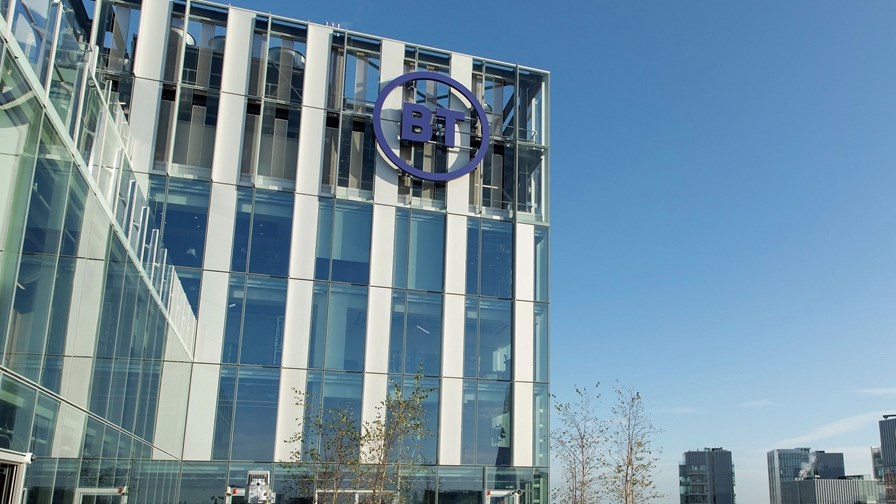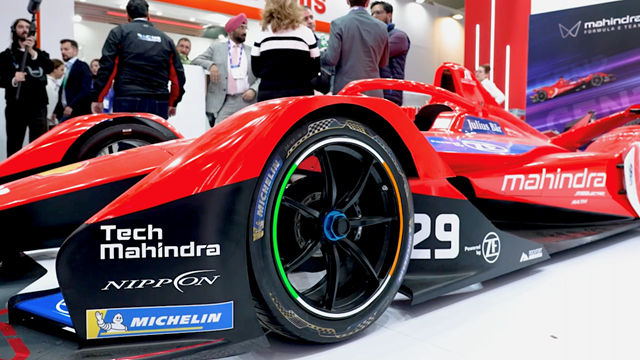
- BT applauds UK’s capex tax incentive ruling
- China Unicom makes hay with private 5G success
- OpenAI saga rolls on with board letter bombshell
In today’s industry news roundup: BT’s tax incentive wishes have been granted and it’s happy with the UK government’s quantum strategy missions too; private 5G success is helping to boost China Unicom’s growth; OpenAI researchers warned board of ‘threat to humanity’; and much more!
BT’s share price has gained almost 4% to 124 pence on the London Stock Exchange following a favourable announcement by the chancellor of the exchequer (the UK government’s chief finance minister), Jeremy Hunt, on Wednesday. As part of his ‘autumn statement’, Hunt announced a permanent extension to so-called “full expensing”, a policy that allows companies to deduct capital spending from taxable profits. The measure had been set to expire in 2026. BT’s CEO, Philip Jansen, noted last week that the tax incentive had helped to make the UK telco’s fibre-to-the-premises (FTTP) rollout an economic possibility and pleaded with the chancellor to make it permanent, stating that such a move would be a “game-changer… that would give businesses like BT Group genuine long-term certainty to plan and shift the investment environment in Britain from good to great.” BT is understandably very pleased with Hunt’s decision. “We are very pleased to see the ongoing support for investments we are making in the UK’s digital infrastructure,” noted a BT spokesperson. “This infrastructure will underpin the UK’s economic development for many years to come and so we welcome [the chancellor’s] announcement to make the full expensing tax benefit permanent. This extension to the scheme will reduce our UK tax bill from FY27 providing a welcome boost to our free cash flow.”
BT is also making positive noises about the UK government’s national quantum strategy missions, which were outlined on Wednesday in this announcement. The missions are part of the UK’s National Quantum Strategy that was announced in March this year. In response to the announcement, Gabriela Styf Sjöman, managing director of research and network strategy at BT, authored a blog in which she stated that the publication of the missions has “turbo-boosted the UK’s ability to compete, by setting out its long-term ‘time-bound’ missions: Missions that will have wide-ranging benefits, enabling industry, academia and investors to come together to make them a reality and signal the UK’s intent internationally.” BT is one of the companies at the forefront of quantum technology developments, in particular the development of quantum-secure networking, which the telco has already deployed in partnership with Toshiba and which is servicing customers such as EY and HSBC.
China Unicom may be the smallest mobile operator in China in terms of subscriber numbers but it is, nonetheless, the sixth-largest wireless carrier on the planet. At the end of September, it had more than 332 million mobile customers and 111 million fixed broadband customers. However, it can often be regarded as something of an also-ran in comparison to its bigger and more powerful rivals, China Mobile and China Telecom, and this perception rankles with Unicom’s top brass. In the first half of this year, Unicom’s revenues grew year on year by 8.8% to 191.8bn Chinese yuan (CYN) (almost $27bn) and net profit rose by 13.1% year on year to CYN12.4bn ($1.74bn). Pleased with the figures, Unicom set itself an ambitious target of double-digit annual profit for the whole of 2023 based on the success and growth of its private 5G and cloud services lines of business. As at 31 October, Unicom had provided 7,441 private 5G networks to enterprise users in China, an impressive year-on-year increase of 138%. It’s also growing impressively in other parts of its business too, as it added a further 47 million 5G subscribers in the 12 months to the end of October to take its total to almost 252 million. The number of Unicom internet of things (IoT) terminal connections hit 474.4 million at the end of last month, a year-on-year increase of 27%. By the same date, China’s operators had deployed 3.22 million 5G base stations across the country, about 28% of the global total. The goal is for the entirety of China’s base stations to be 5G by the early 2030s and the powerful Ministry of Industry and Information Technology (MIIT) forecasts that 88% of wireless connections in China will be 5G by 2030, with 4G accounting for the remaining 12%. It’s a forecast that seems founded in reality. The MIIT says while 4G will remain the dominant wireless comms technology for the next year or so (currently it accounts for 55% of all mobile connections), 5G will dominate before the end of 2024.
The plot thickens at OpenAI… As staff celebrated the return of Greg Brockman and his pal Sam Altman, who looks set to resume as CEO following about 60 hours in the Silicon Valley wilderness, Reuters reported that several OpenAI researchers wrote a letter to the company’s board of directors just days before Altman was sacked as CEO last Friday “warning of a powerful artificial intelligence discovery that they said could threaten humanity”. This is a particularly big deal for OpenAI because its stated mission is “to ensure that artificial general intelligence [AGI] – AI systems that are generally smarter than humans – benefits all of humanity” and to ensure that the AGI tools it develops are “safe”.
Telstra has scored the lion’s share of licences awarded in Australia’s latest 5G spectrum auction. The Australian Communications and Media Authority (ACMA) issued a statement, unveiling that Telstra has won 326 lots of spectrum in the 3.4GHz and 3.7GHz bands for AUS$545.6m (US$358m), which the telco noted was purchased “at a highly competitive price” and that it will ensure the company has “long-term network differentiation”. The second-highest bidder was TPG Telecom, through its infrastructure subsidiary Mobile JV, paying AUS$128m (US$84m) for 44 lots in the two bands. Optus ranked third in terms of amount spent, ploughing AUS$33.5m (US$22m) into four lots. Finally, NBN Co (the government-owned company that builds and operates Australia’s National Broadband Network) won 200 lots of spectrum for AUS$14m (US$9m). The telecoms regulator noted that out of 588 available lots, 574 were allocated to the four bidders, and that the total revenue generated from the auction was AUS$721.8m (US$473m). The licences are expected to come into force soon, with the 3.4GHz band licences expiring in December 2030, while the 3.7GHz spectrum can be used until January 2044. ACMA chair Nerida O’Loughlin noted that the allocated spectrum will “support digital connectivity, promote competition and facilitate investment in new services for Australian consumers and businesses across metropolitan and regional areas of Australia.” Find out more.
ETSI, the independent, not-for-profit, 900 member-strong European Telecommunications Standards Institute, has announced the inauguration of its Industry Specification Group for Integrated Sensing and Communications (ISG ISAC). The purpose of the new ISG is to determine the technical underpinnings on which Integrated Sensing and Communications will be developed and how they can be included in 6G standards. In this instance, ‘sensing’ refers to the use of radio signals to detect and estimate the characteristics of target objects in a given environment. When sensing is integrated, the network itself can act as a sort of radar sensor by using its own radio signals to ‘see’ and understand the physical environment in which it operates. This permits the network to collect data on the range, velocity, position, orientation, size, shape, image and composition of materials of objects and devices. Sensing data is collected and processed by the network and then applied to enhance the network’s own operations and thus augment existing services and enable new services, such as gesture and activity recognition, object detection and tracking, along with imaging and environment reconstruction. Things are moving quickly: ETSI’s announcement came less than a week after 87 representatives from academia and business met at the institute’s headquarters in Sophia Antipolis in the South of France. Dr Alain Mourad from InterDigital is the chairperson of the group, while Dr Ayman Naguib from Apple, Dr Richard Stirling-Gallacher from Huawei, and Professor Henk Wymeersch from Chalmers University of Technology in Sweden were selected as the vice chairpersons. Commenting on the establishment of the new ISG, Dr Mourad said, “Integrated sensing and communications add a new element of capability to the wireless network, enabling new innovative use cases in transport, urban environments, homes, and factories, ranging from object and intruder detection in predefined secure areas around critical infrastructures to fall detection and rain/pollution monitoring.” The ISG will enable ETSI members to co-ordinate their 6G pre-standard research efforts on ISAC, with a particular emphasis on various European/national-funded collaborative projects that will be extended via relevant global initiatives to help pave the way for the 6G standardisation of the technology. In essence, the ETSI ISAC ISG will define a prioritised set of 6G use cases and sensing types, together with a roadmap for their analysis and evaluation. It will focus on advanced 6G use cases and sensing types that are not expected to be covered by 3GPP Release 19, and expectations are that such technological advancements will be included in future 6G specifications developed by the 3GPP. The ISG will further develop advanced channel models for ISAC use cases and sensing types, with validation through extensive measurement campaigns, aiming to address gaps in the work being done by other industry bodies, such as the 3GPP, the ITU and the IEEE. ETSI’s news came only days after the conclusion of the ITU’s Radiocommunication Assembly 2023 (RA-23), which “adopted a resolution that will guide the development of standards and radio interface technologies” for 6G.
Ericsson, Vodafone and Qualcomm have demonstrated what they claim are the first reduced capability (RedCap) data sessions on a European network, “paving the way for a multitude of IoT and other connected devices to transmit data more simply and efficiently.” 5G reduced capability is designed to support internet of things (IoT) applications and provide greater bandwidth than is possible with LTE-M. The successful demo took place on 21 September in the Spanish city of Ciudad Real, running on Ericsson’s RedCap RAN software using Vodafone Spain’s live testing 5G network ‘CREATE’ (Ciudad Real España Advanced Testing Environment). Read more.
Vodafone UK has added to its M&A lobbying campaign with a press release that suggests the UK will benefit from much speedier 5G standalone rollouts if it is allowed to complete its planned £16.5bn merger with Three.
- The staff, TelecomTV
Email Newsletters
Sign up to receive TelecomTV's top news and videos, plus exclusive subscriber-only content direct to your inbox.




